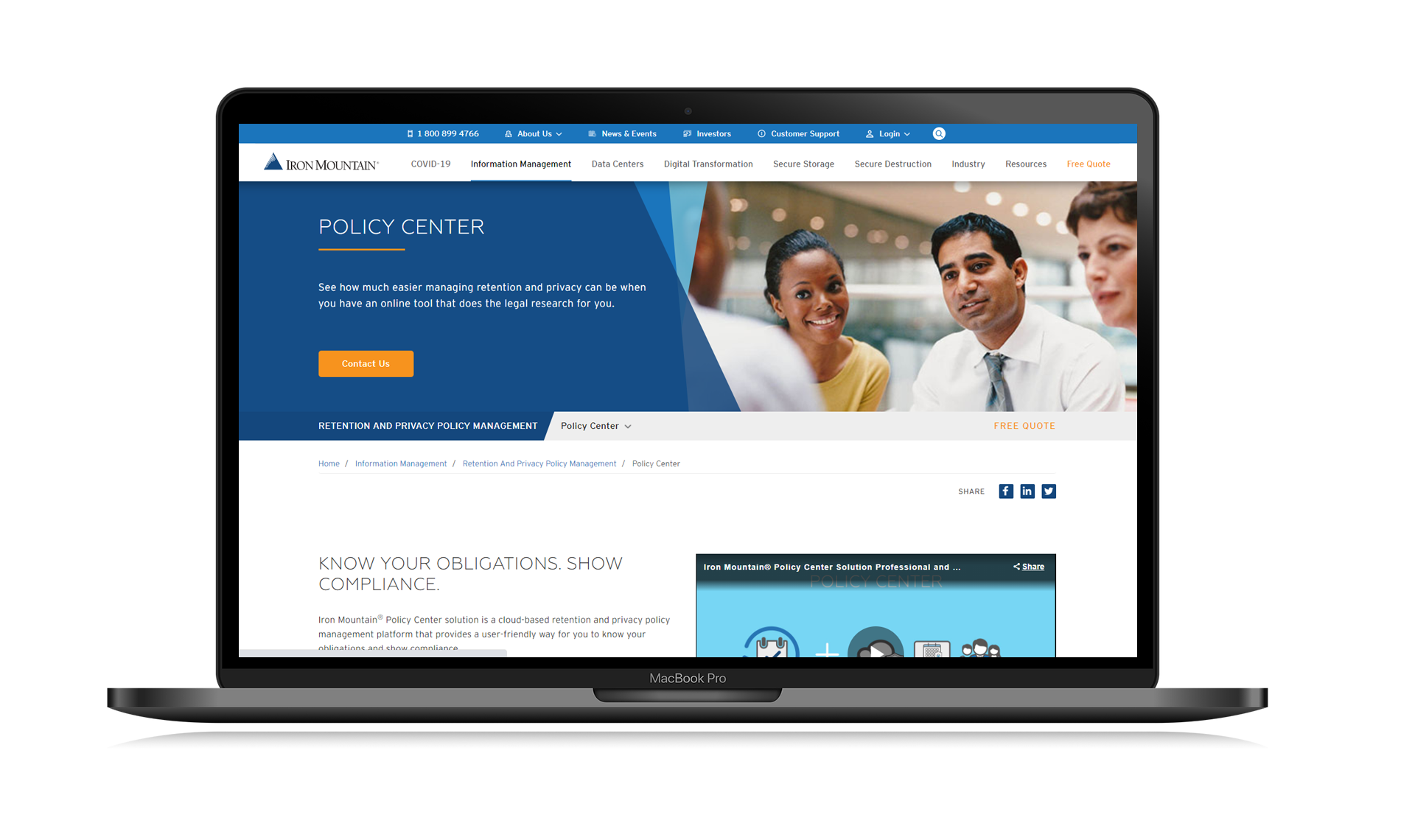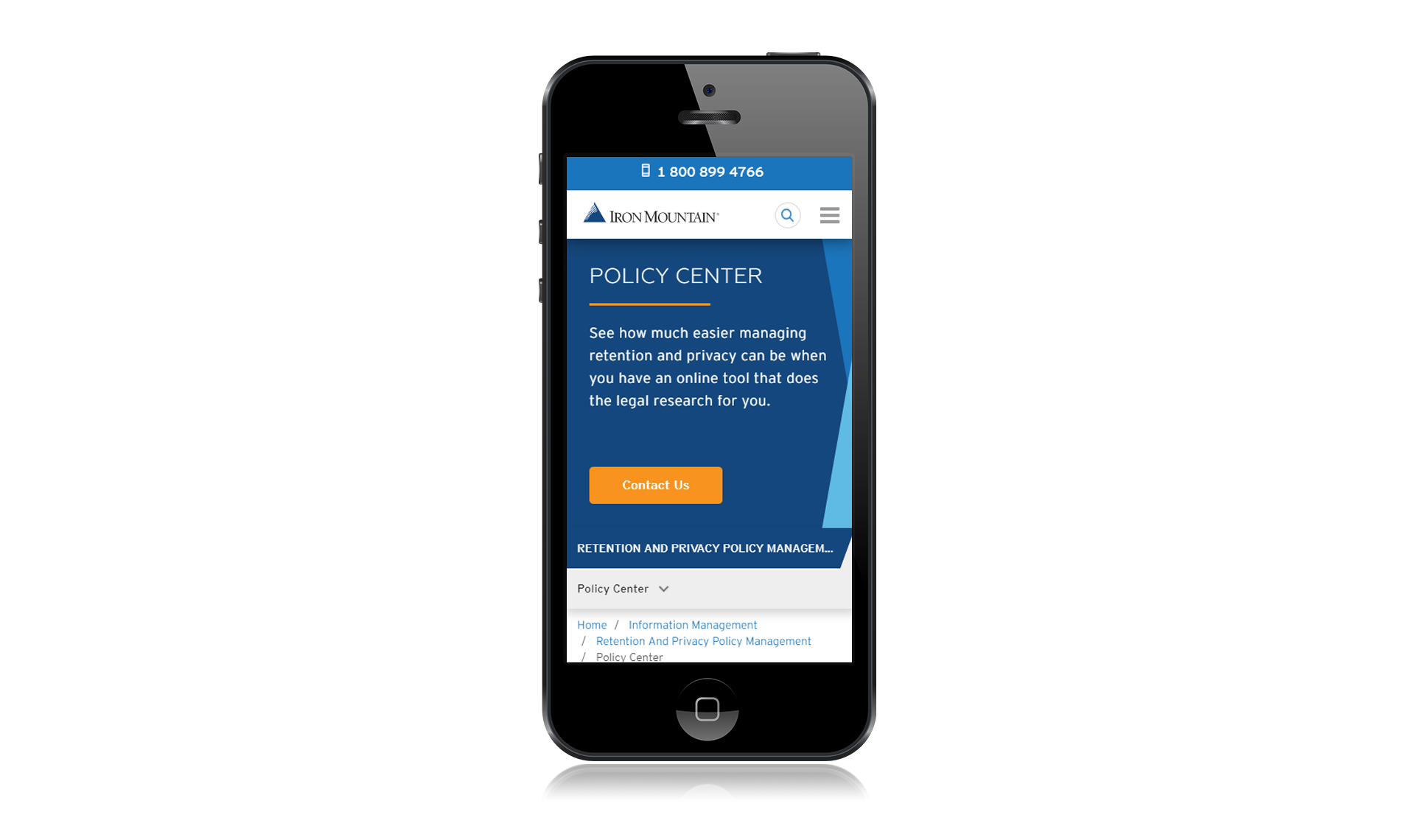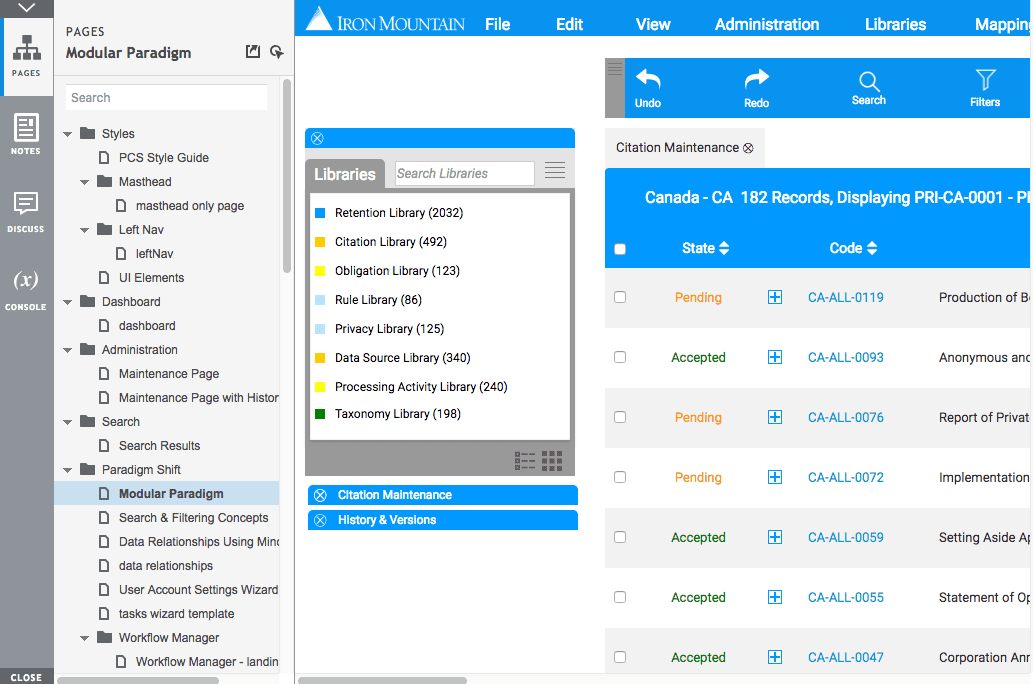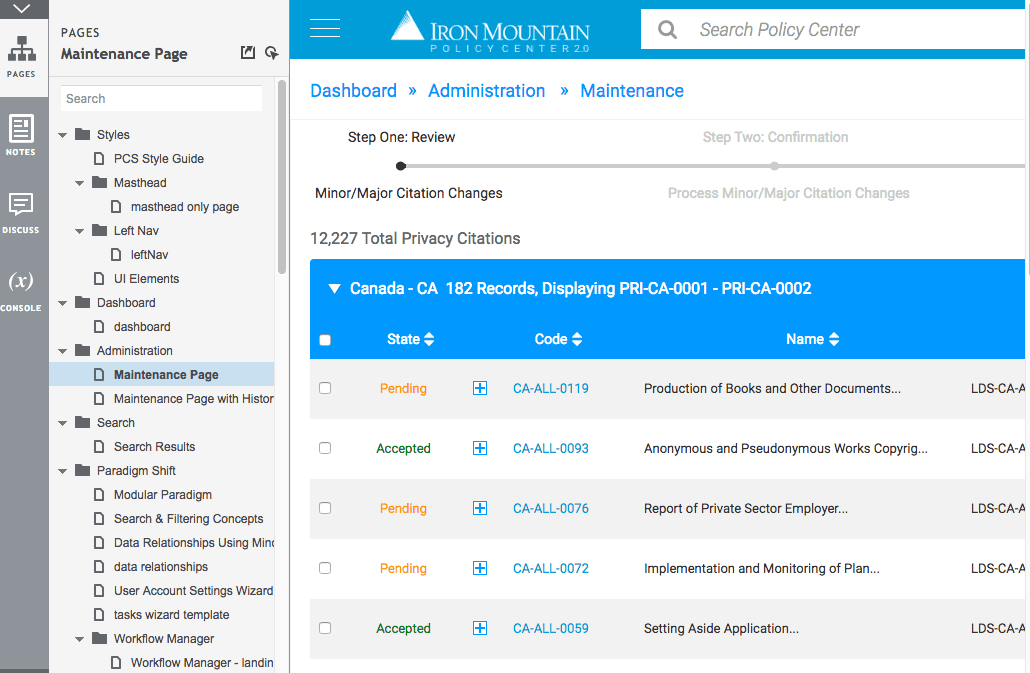IRON MOUNTAIN POLICY CENTER
I Designed an Easier Way to Maintain Legal Citations
Project Summary
Project Deliverables
Usability Research
Understanding the application's current state and users' pain points was critical prior to developing the new user experience. We used an online survey and user interviews that queried users about their experience and opinions on application functionality and system performance as it relates to their individual user experiences. The deck below is a report on our findings, including recommended next steps and changes to the user interface and design.
Usability Research Report

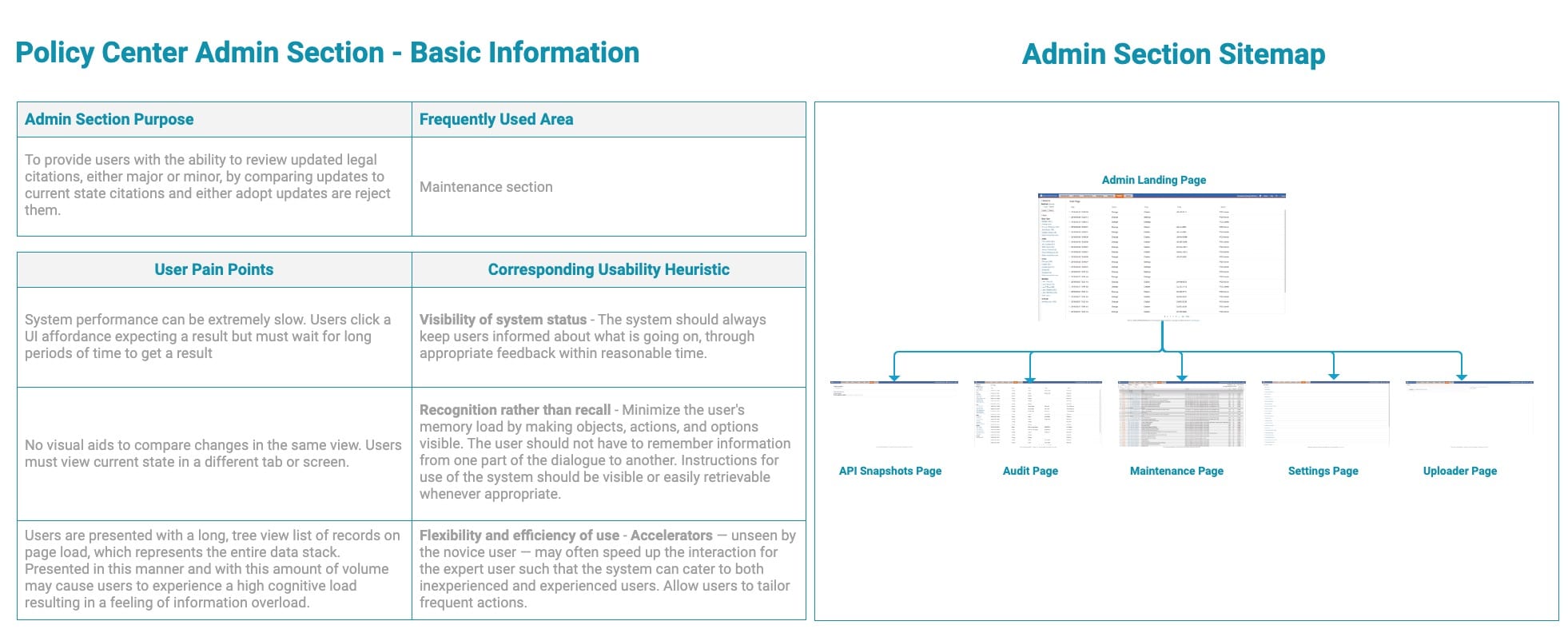
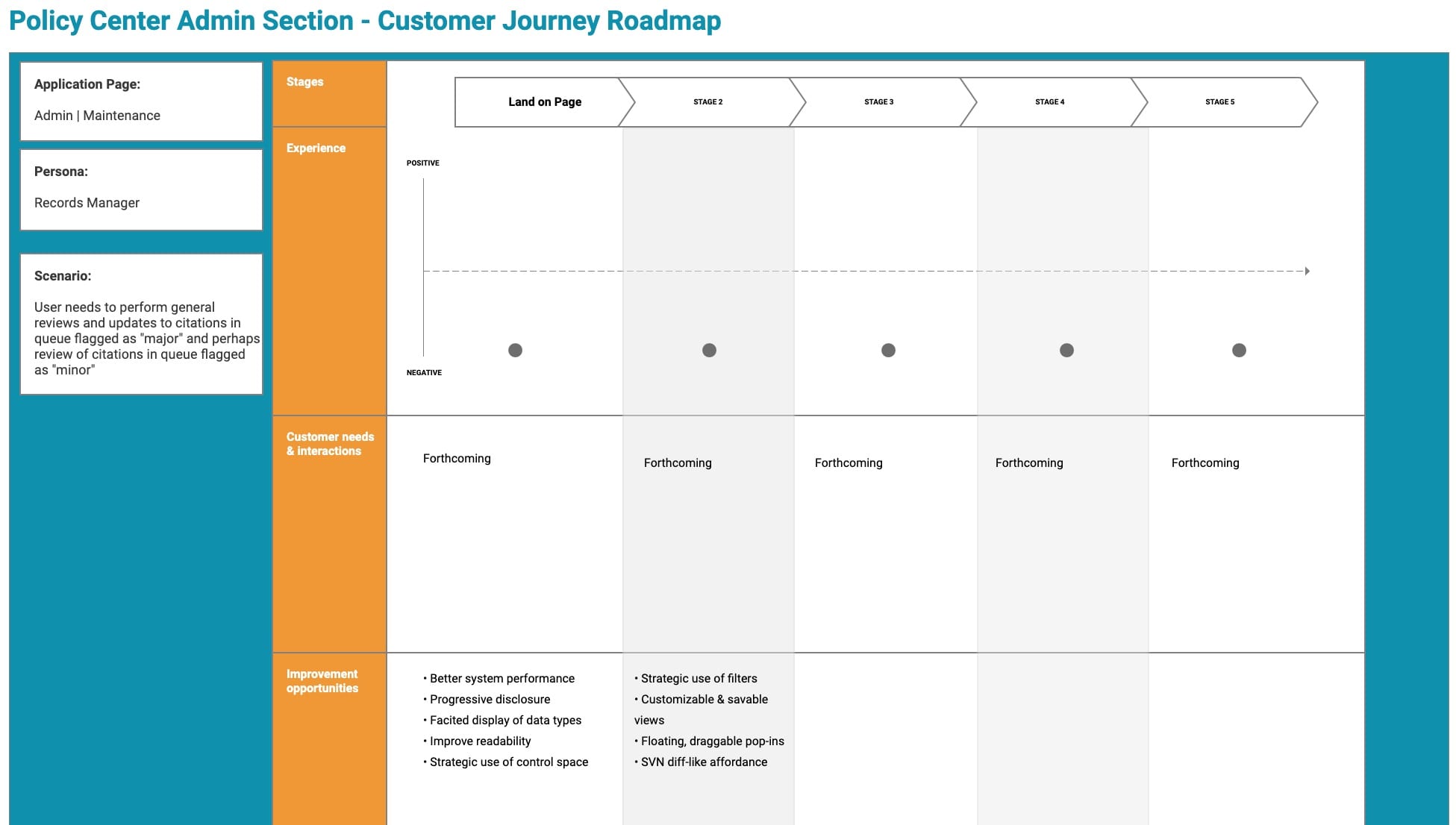
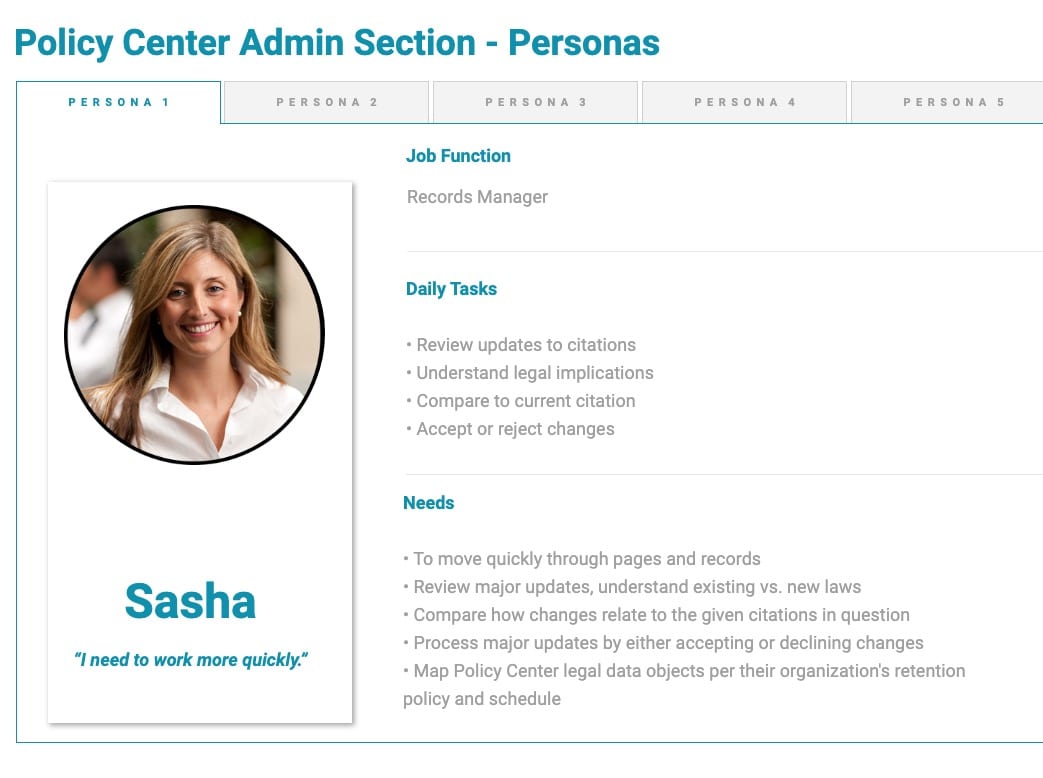
UX Recommendations
This deck is a continuation of the effort to implement fresh and useful UX patterns. It addresses complex data visualizations from a parent-child-sibling relationship spanning multiple categories.
User Flows in a Tasks Wizard Concept
The purpose of this deck was to illustrate to project stakeholders how a wizard-based user flow could remedy confusion and increase data quality.
UX Prototyping with Axure RP
Project stakeholders wanted to see how my UX concepts and improvements translated into a functioning application. They requested a high-fidelity UX prototype shareable with other members of the management team as well as select users and a before/after usability test. I used Axure RP 8 to create a dynamic, logic-driven interactive clickthrough of approved UX patterns and designs from the previous stage in the project.
Protoype Concept One
Concept One's goal was to solve a findability and discreet sorting problem. It did this by providing inline filtering patterns and granular-level data settings that are usable as saved preferences.
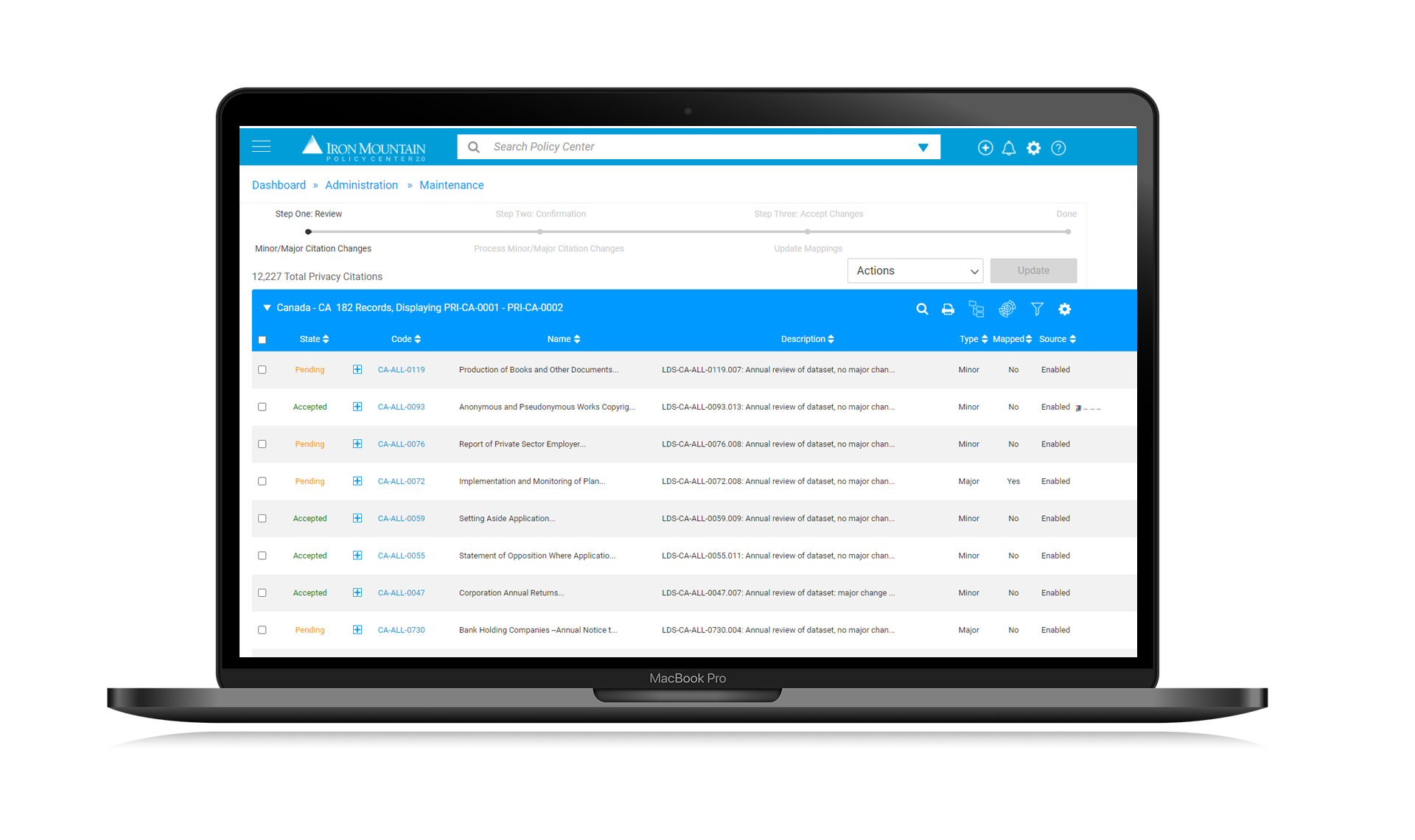
Protoype Concept Two
Concept Two addressed the the lack of flexibility presented in a standard grid/table-based data visualization. It allowed users to drag and drop to place content where they want it and display specific categories of content to their liking.

